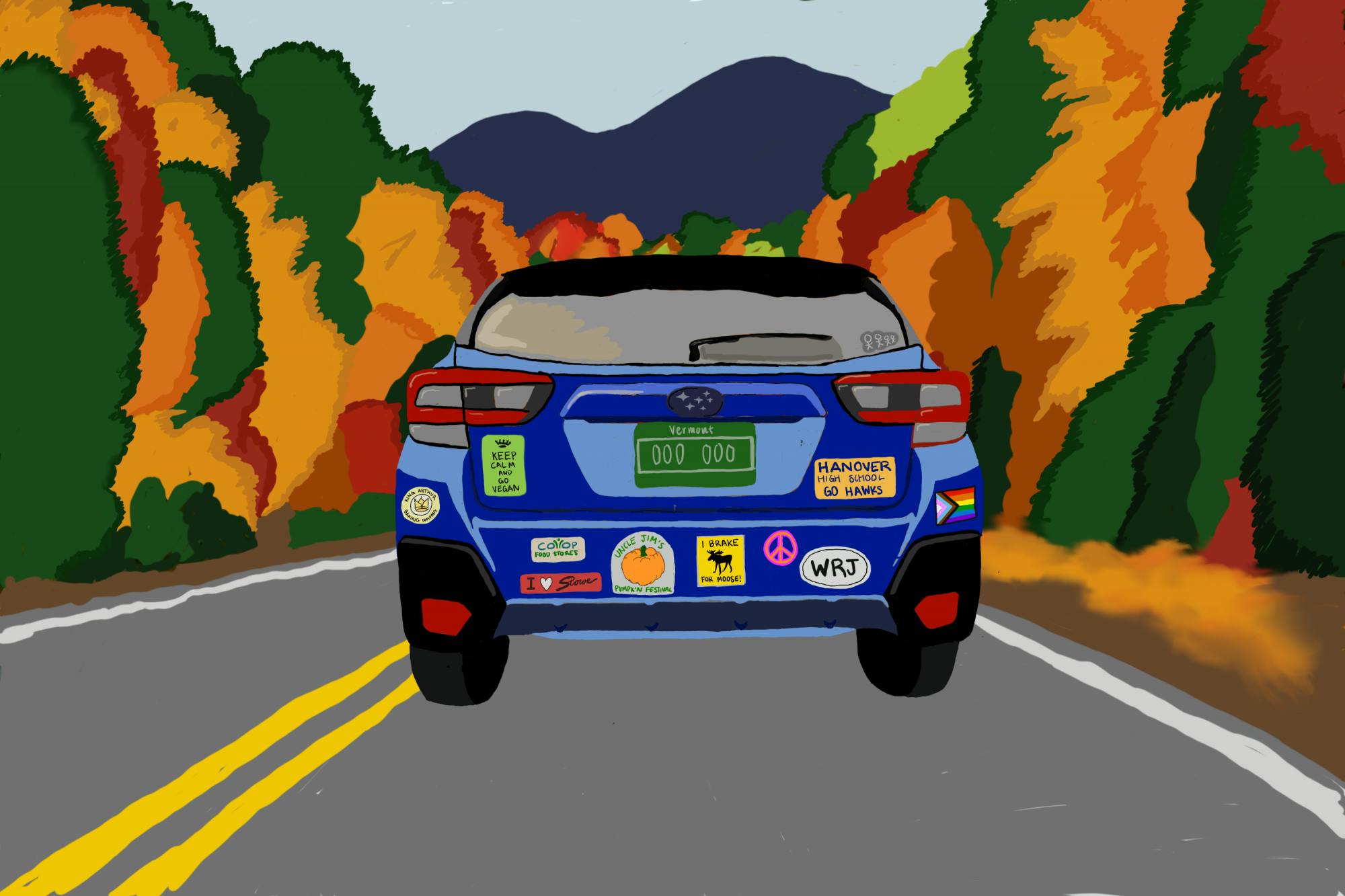It’s no secret that Hanover is an odd duck compared to the Upper Valley at large. All it takes is a ten-minute drive in any direction to notice some differences between the sprawling mansions on Occom Pond and the isolated strip malls of surrounding towns.
From our limited perspective within the Dartmouth bubble, the impact we have on the area we choose to inhabit isn’t always obvious. This week, I set out to interrogate our position as Upper Valley citizens. Maybe in some ways, the Dartmouth population supports the local economy — bringing our dollars to local businesses. But after hearing tales of property values driven sky-high, it’s hard to believe that the Dartmouth diaspora hasn’t had any negative impacts on the Upper Valley.
Marya Merriam is a resident of Strafford, Vermont, about thirty minutes from Hanover. They’re also the owner of Woodfrog Flowers, a business I encountered at the Norwich Farmers Market. Merriam described Dartmouth-affiliated customers they’ve seen there.
“The first are parents, who are great customers. They tend to be somewhat wealthier and want to buy their child a nice thing,” Merriam said. While they admitted that income inequality in the area is its own problem, Merriam said that being a seller at the farmer’s market allows them to reap its benefits.
“The second group is students who want a little thing for their room,” said Merriam. “That’s usually quite positive and it’s sweet to see people pick out something that will make them happy.”
In some cases, though, visitors come for the aesthetic and don’t end up buying anything at all.
“What happens a surprising amount,” Merriam continued, “are people who take a photo in front of my booth but don’t buy anything. I know we live in the social media age, and my booth is a hot place for a cute photo.”
Merriam connected these photo-focused customers to Dartmouth’s broader relationship with the Upper Valley.
“We’re in a tourism-based economy, and I’m used to wealthy people coming to buy an experience where everything is perfect. It’s almost like playing a part of the Vermont farmer…who is there to serve them in some way.”
While Merriam acknowledged that they benefit in some ways from this system, they also said “it is sometimes exhausting to play this role.”
Jenevra Wetmore, program director at the nonprofit Sustainable Woodstock, grew up in the Upper Valley and has had a mixed perspective of Dartmouth. Wetmore was a student at Hanover High at a time when a scandal regarding Greek life and hazing was boiling over, something they said “did not reflect well on the College.”
“I don’t really like the fraternity and sorority culture that was around me in high school and existed in my field of vision — it never seemed healthy,”Wetmore said. Now, though, Wetmore’s perspective has changed somewhat for the better.
Through their work with Sustainable Woodstock, Wetmore worked with Dartmouth students taking a Social Impact Practicum class. Despite the stereotype that “Dartmouth students were really entitled,” Wetmore was pleasantly surprised by the students’ work.
“None of them were from Vermont and they were unfamiliar with our target populations, which are low-income and especially mobile home owners, but they stepped up and learned a lot,” Wetmore said. “It was a complete joy to work with them.”
Dwight Aspinwall ’84 is both an alumnus and an Upper Valley local, living just up Balch Hill. Graduating as a computer science major, he now plays with the Dartmouth College Wind Ensemble, uniquely positioning him both inside the institution and outside as a community member.
“In a group like DCWE, I get to work very closely with students, which is really enjoyable,” Aspinwall said. “It’s different maybe than the level of interaction the average community member has.”
Aspinwall emphasized that some events have been successful in bringing Dartmouth and the community together.
“DCWE has done something in the spring where they bring in local students to rehearse with the director and a number of student volunteers,” he said. “My son did it, and he got one-on-one time with a Dartmouth trumpet player. It’s a great opportunity for Dartmouth musicians to give back and have this great synergy.”
Locals’ perspectives on Dartmouth are certainly varied, but in any case there is room for improvement for both ourselves and our college.
“Dartmouth has quite a bit of clout, whether institutional or through the amount of money in the region they control,” said Merriam. “Considering I farm in this area, I would love to see Dartmouth lead a transition to renewable energy in this area.”
Wetmore backed this notion as well, expressing disappointment over Dartmouth’s “confusing and contradictory stance” on environmental issues. They also expressed hope for individual students to “go out and volunteer a bit more and do things in the community. On behalf of nonprofits, we would love to have more students help out,” they said.
While some locals have enjoyed being in close proximity to Dartmouth, rumors of entitlement still persist within the Upper Valley. Wetmore expressed that students “shouldn’t have to be responsible for changing,” especially on a larger scale. But even if we can’t get rid of our institutional privilege, we are citizens of the Upper Valley too. Perhaps adjusting our attitudes is the least we can do.




